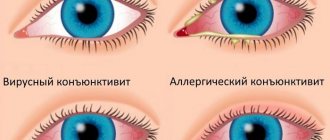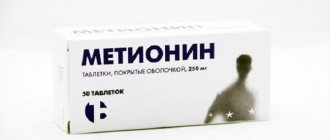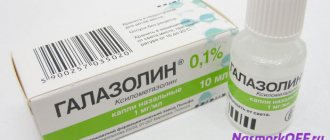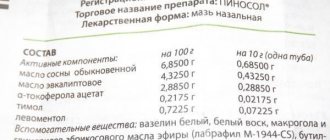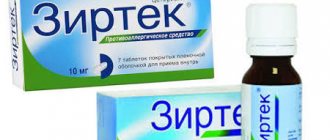+RU
Consultation with a Phlebologist in Moscow, Articles, Reviews of Clinics
Join us and follow the news on social networks
Some diseases of the nose are accompanied by severe swelling of its mucous membrane, which leads to difficulty breathing and the appearance of moist discharge from it. To reduce unpleasant symptoms in such situations, medications are used that cause narrowing of the capillaries in the affected area.
At the same time, blood flow in the treated area decreases, which leads to a decrease in fluid perspiration through the vascular walls and relief of edema. For this purpose, vasoconstrictor drops are dripped into the nose for sinusitis, ethmoiditis, frontal sinusitis, rhinitis and other diseases.
A procedure that is familiar to many
- Indications
- Classification Drops based on naphazoline
- Phenylephedrine drops
- Drops based on xylometazoline
- Drops based on oxymetazoline
Vasoconstrictor drugs
Such medications constrict blood vessels, relieve swelling in the nose, thus eliminating nasal congestion and moisture. Unfortunately, this effect only occurs for a few hours, and then the runny nose resumes.
The disadvantage of such drugs is the increase in blood and intraocular pressure. If you take the drops for too long, the opposite effect occurs - the nasal mucosa swells.
According to the instructions, the use of the drug should last about a week, if after this time the runny nose does not go away, you need to use more progressive medications after consulting a specialist.
In addition, vasoconstrictor drops are not recommended to be used together with medicinal drops, as they make the absorption of the medication more difficult. The optimal interval between them should be 40 minutes.
Other types of cold drops
There are many nasal drops available. Each type is suitable for treating specific problems. Nasal drops should be selected by the attending physician, taking into account:
- history of allergic reactions;
- recent analyses.
Antiviral
Antiviral nasal drops have excellent preventive and therapeutic effects. Their task is to stimulate the production of interferon protein in the body. Interferon helps the body resist attacks from viruses and foreign bacteria. Therapy is carried out at the very beginning of the illness, at the first hint of viral infection. Otherwise, the medicine will not be nearly as effective.
Hormonal
To alleviate allergy symptoms, doctors prescribe hormonal nasal drops to patients. They gently eliminate:
- increased secretion of mucus;
- nasal congestion.
Long-term use of hormonal nasal sprays reduces the immunity of the nasal mucosa. The independent ability to resist diseases drops sharply. The duration of the course in each specific case is determined by the doctor, taking into account the characteristics of the patient’s body.
Hormonal medications come in bottles with a manual pump, so they usually do not cause accidental overdose.
With antibiotic
Antibiotic nasal drops are used if nasal mucus has turned yellow or green. This indicates the rapid proliferation of pathogenic bacteria on the inflamed mucosa. The brand of antibiotic drops and the required dosage should only be prescribed by a doctor.
Moisturizing drops
The basis of such preparations is a solution of sea salts. As every person knows, sea water is very beneficial for humans. One of the most common moisturizers is Sanorin.
It moisturizes the nasal mucosa, reduces swelling, inflammation becomes less, and nasal discharge thins. You can’t expect an immediate effect from using such drops, but they help speed up recovery.
Many mothers prefer this option of drops for their children, because there are no side effects from them. The simplest substitute for moisturizing drops is saline solution in case they are not on hand.
What medications for the common cold are approved for children?
Nasal medications for children are divided into three main groups according to duration of action. Names of vasoconstrictor nasal drops and how long they last:
- Short-acting drugs. Their effect lasts 4-6 hours. Active ingredients: phenylephrine, naphazoline, tetrizoline. Naphthyzin is a drug based on naphazalin. Vibrocil and Nazol Baby are created using phenylephrine. Tetrizoline is present in the preparations Tizin and Vizin.
- The average duration of action of vasoconstrictors is from 6 to 10 hours. Such drugs may be based on the substances Xylometazoline and Tramazoline. The first is used in the drugs Otrivin and DlyaNos. The second is part of Adrianol and Rhinospray.
- Long-acting medications have an effect even after a 10-hour period. These are the most modern developments in pharmacology in the field of protection against the common cold. Active ingredient: Oxymetazoline. Nazol and Nazivin are made from it.
Drops against viruses
The effective effect of the drug is noted by many, but only if the use of drops is started at an early stage of the disease. Their use should be regular and exactly according to the instructions, which will allow you to forget about a runny nose after three days.
The active substance of antiviral drops is interferon. It is produced by the human body as a response to infection.
In the pharmacy chain you can purchase not only drops with interferon, but also interferon itself in dry form. It is enough to dilute it with water, and you can safely put drops in the nose even for babies, since no side effects have been registered.
What nasal drops are possible during pregnancy?
The list of medications available for use during pregnancy is quite limited, since during this period only formulations that are safe for the fetus and its mother are needed. Undoubtedly, sometimes potential harm is neglected - this is only possible in cases where the disease is even more dangerous than the use of the drug composition.
Vasoconstrictor medications during pregnancy are not recommended to combat nasal congestion, especially if the mother has a tendency to increase blood pressure. You should also avoid hormonal agents and oxymetazoline-based formulations. But moisturizing drops with sea water are completely safe, so you can safely drip them (AquaMaris, Salin). Also approved are the drug based on pine oils Pinosol and some homeopathic remedies.
Herbal remedies
Drops of medicinal herbs are very effective in the fight against runny nose. They have a moisturizing effect on the mucous membrane, reduce inflammation, and fight infection. One of these drugs is Pinosol. It can be purchased in the form of drops or a special nasal cream.
The disadvantage of herbal medicine with such remedies is the presence of essential oils in them, which often cause allergies in people being treated. Therefore, children under three years of age are prohibited from using herbal medicines.
Colds or allergic rhinitis - the main criterion for choosing a medicine
Drops are a complex chemical substance that can act differently in each individual case, so the best remedy for nasal congestion should be prescribed by the attending physician.
To determine the type of drops, it is necessary to identify the type and type of runny nose. The table below will help you figure this out:
| Type of runny nose | Duration of illness | Symptoms |
| Runny nose with a cold | The disease mainly manifests itself in the cold season. Duration from 4 days to two weeks | The appearance of yellow snot, increased body temperature, and a wet cough. |
| Runny nose due to allergies | This disease manifests itself in the warm season due to exposure to various allergens on the body. | Constriction in the throat, itching in the nasal cavity, headaches, fever, deterioration of smell, swelling of the mucous membrane. |
How to treat your nose?
Many drops allow you to get rid of a runny nose quickly, but for a short time. This is due to the fact that a runny nose is a symptom of some disease that cannot be quickly treated. It is important to distinguish between a runny nose and nasal congestion:
- Congestion – the inability to breathe through the nose due to inflammation and swelling of the nasal mucosa;
- A runny nose is an excess of mucus that cleanses the mucous membrane of accumulated impurities.
If any of these symptoms appear, you do not always need to quickly take drops from the medicine cabinet. Perhaps the mucous membrane is simply protecting itself from the cause of the disease. If you remove all the “troubles”, the nose will become defenseless and will not be able to resist another infection.
Therefore, it is believed that quickly getting rid of a runny nose only harms the human body. It is better to endure a few days than to use nasal drops for several weeks.
But, nevertheless, such therapy is recommended if:
- It is generally impossible to breathe, and the drops will help restore the passage of air through the nasal passages;
- Get rid of symptoms for the duration of the event;
- With simultaneous inflammation of the throat.
Comments (6)
Svetlana
12/26/2015 at 11:12 pm |
The difficult period comes when you get sick. Headache, sore throat, stuffy nose. Therefore, it is necessary to begin treatment, as well as to alleviate the course of the disease. Medicines you put in your nose are usually not a cure. They need to be used for a short time to avoid addiction. Be careful.Answer
Anna
12/26/2016 at 01:24 pm |
A runny nose goes away on its own, but bacterial rhinitis needs to be treated: drops. decoctions, antibacterial agents. Then you can go broke.
Answer
Expert Marina Rusetskaya
05/20/2019 at 00:19 |
Anna, you need to treat both a runny nose and bacterial rhinitis.
Let's figure it out.
Rhinitis is a runny nose, only in medical language. When pathological microflora joins, bacterial rhinitis results.
Signs of infection by microorganisms include nasal mucus turning yellow or green.
A runny nose needs to be treated for several reasons:
1. In a person, ordinary advanced rhinitis can be complicated by inflammation of the cranial sinuses and then the result is frontal sinusitis, sinusitis or polysinusitis.
2. The brain is not completely isolated from the environment, as most people think. The cranial cavity communicates with the environment through the ethmoid bone.
It is so called because there are holes in it, and the bone itself resembles a lattice in appearance. Figuratively speaking, the nasal passages rest against this bone.
Lack of adequate and timely treatment of rhinitis can lead to the infection entering the cranial cavity through the ethmoid bone and causing inflammation of the hypothalamic-pituitary system. And this in turn will lead to hormonal imbalance in the body.
Of course, this is not the most common outcome of a runny nose, but no one is immune.
Treatment of a runny nose and bacterial rhinitis can be carried out in the most accessible way.
It is best to use hypertonic saline solution.
To do this, dissolve a teaspoon of ordinary salt in a cup of boiled chilled water and instill one drop into each nasal passage after 3-4 hours.
The hypertonic solution stimulates the secretion of nasal mucus, which helps flush out bacteria.
In addition, the increased concentration of salt in the solution attracts water from the bacteria and they become dehydrated and die.
In this way, the bacterial focus is sanitized.
Answer
Luda
01/29/2017 at 08:13 pm |
The best thing is to rinse your nose, but be careful with aerosols. I washed the otitis with Aqualor from the pressure and pressure of the jet. The doctor advised me to take a bottle like Morenasal, it has a dispenser, you can’t overfill it, and it cleans your nose perfectly.
Answer
Andrey
10/05/2017 at 05:34 |
The use of vasoconstrictors can lead to much worse consequences; problems with the mucous membrane may begin, even leading to surgical intervention. It’s better to use products with essential oils, such as “star”
Answer
Expert Marina Rusetskaya
05/20/2019 at 00:26 |
Andrey, you are right about being careful with vasoconstrictor nasal drops.
These drugs (based on oxymetazolone) provoke drug dependence when used for more than three days.
And instead of relief from a runny nose, the patient gets the same runny nose combined with headache and atrophy of the mucous membrane.
A hypertonic saline solution, which can be easily prepared at home, is an excellent way to get rid of rhinitis.
You just need to dissolve a small spoon of table salt in a cup of boiled water.
Use the product 6-8 times a day.
Answer

